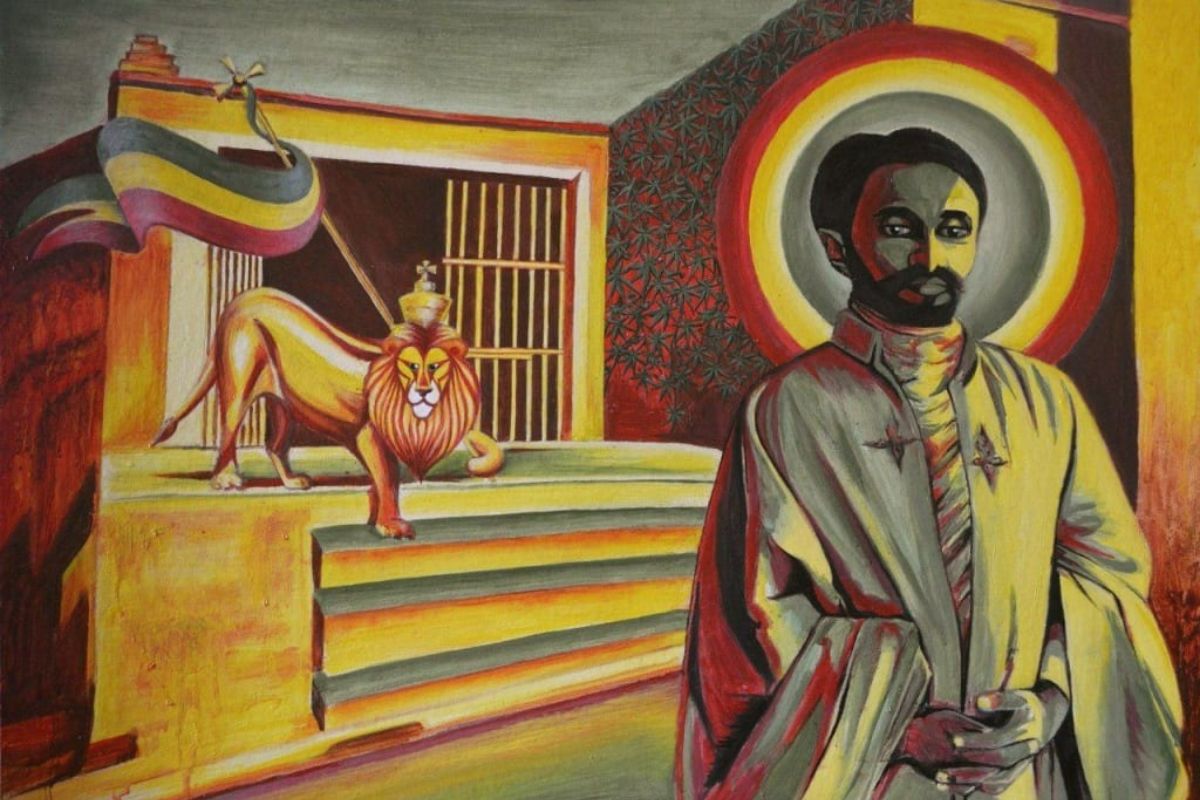
Did you know that Jews have a history spanning over three millennia and a population of around 14 million worldwide? From their ancient origins in the Middle East to their significant presence in modern countries like Israel and the United States, Jews have maintained a unique cultural, religious, and ethnic identity. This article explores 45 fascinating facts about Jews, covering their historical roots, genetic diversity, cultural practices, and notable contributions to various fields. Whether it's their ancient communities, their influence on American culture, or their resilience through events like the Holocaust, Jews have a rich and complex story worth understanding.
Population and Distribution
Jews have a unique and widespread presence around the globe. Their population and distribution reflect their rich history and cultural impact.
- There are approximately 14 million Jews worldwide, with the majority residing in Israel and the United States.
- Jews make up about 0.2% of the global population, with significant communities in Israel, the United States, France, and Russia.
Historical Origins and Communities
The history of Jews is deeply rooted in ancient civilizations and spans thousands of years. Their journey through time has seen the rise and fall of empires.
- The origins of the Jewish people are complex and multifaceted. They emerged as a national and religious group in the Middle East over 2,000 years ago, influenced by ancient empires such as Egypt, Babylon, and Assyria.
- Jewish communities have been found in various parts of the ancient world, including Egypt, Babylon, and Assyria. These communities maintained their distinct cultural and religious practices despite being part of diverse empires.
Genetics and Identity
Jewish identity is a blend of religious, cultural, and genetic factors. Studies have shown the shared ancestry and diversity within Jewish populations.
- Population genetics studies have revealed that contemporary Jews have a shared Near Eastern ancestry, with variable degrees of admixture and introgression from host populations. This genetic diversity is consistent with historical migrations and diaspora events.
- Jewish identity is multifaceted, encompassing both religious and ethnic components. The term "Jew" was not used to identify Jews until after 500 BCE, with earlier references using terms like "sons of Israel" or "Hebrews".
Religious and Cultural Practices
Judaism is not just a religion but a way of life. It includes a rich tapestry of traditions, laws, and customs that have been passed down through generations.
- Judaism is both a religion and a culture. It includes a set of religious practices, traditions, and laws that are central to Jewish life. The Hebrew Bible and the Torah are the most sacred texts in Judaism.
- In the United States, fewer than one-in-five Jews keep kosher, with 14% separating meat and dairy and 3% keeping a strict kosher diet. Many Jews connect with their culture through food, historical sites, and media.
- Most non-Orthodox Jews in the United States do not regularly attend synagogue services. Only about half are members of a synagogue, and most attend services only a few times a year.
Political and Social Engagement
Jews have been active in political and social spheres, often using their identity to drive change and advocate for their communities.
- Three-in-ten American Jews engage in political activism as an expression of their Jewishness, with Conservative Jews being particularly active. There is no Jewish Republican in the Senate or House of Representatives, with Democrats holding 22 Congressional seats and 11 Senate seats.
- The oldest Jewish congregation in the United States is the Sephardi Shearith Israel community in New York, established in 1654. The first American Haggadah was published in 1837 by S.H. Jackson.
- To meet the demand from Jewish immigrants in 1911, a kosher kitchen was built at Ellis Island. This initiative facilitated the integration of Jewish immigrants into American society.
Contributions to Science, Arts, and Culture
Jews have made significant contributions to various fields, including science, arts, and culture. Their impact is felt worldwide.
- Jonas Salk discovered the polio vaccine in 1955, and Levi Strauss invented blue jeans in 1873. Notable figures include scientists, artists, musicians, and politicians.
- Jewish individuals have been prominent in media, with notable figures such as Woody Allen, who has been nominated for 23 Academy Awards, and Yip Harburg, who wrote the lyrics to "Over the Rainbow".
- Jewish culture has had a profound influence on American society. The "I Love New York" logo was designed by Milton Glaser, and Mel Blanc provided the voice for cartoon characters like Bugs Bunny and Woody Woodpecker.
Holocaust and Resistance
The Holocaust was a dark chapter in Jewish history, but it also highlighted the resilience and bravery of the Jewish people.
- The Holocaust, which occurred between 1933 and 1945, was a systematic state-sponsored killing of six million Jewish men, women, and children by Nazi Germany. The Nazis portrayed Jews as Untermenschen (subhumans) and implemented policies like Kristallnacht and the "final solution" to exterminate them.
- Despite the overwhelming odds, Jewish resistance to the Nazis was significant. Individuals like Anne Frank documented their experiences in diaries, and groups like the Jewish partisans fought against the Nazi occupation.
- After the Holocaust, Jewish communities around the world came together to rebuild and remember. The establishment of Israel in 1948 provided a homeland for many Jews, and efforts to preserve Jewish culture and history continued unabated.
Genetic Studies and Health
Genetic research has provided valuable insights into the health and disease patterns within Jewish populations.
- Population genetic studies have shed light on the origins and relatedness of Jewish groups. These studies have identified shared Near Eastern ancestry and variable degrees of admixture from host populations, providing insights into Jewish demographic histories.
- Jewish population genetics has also contributed to understanding health and disease patterns. The genetic architecture of Jews helps explain observed patterns of health-relevant mutations and phenotypes, which are crucial for medical genetics research.
Food Traditions and Cultural Engagement
Food plays a central role in Jewish culture, serving as a way to connect with heritage and traditions.
- Cooking and eating Jewish foods are common practices among U.S. Jews. About seven-in-ten Jews say they often or sometimes cook or eat Jewish foods, making this the most common form of participation in Jewish culture.
- Most U.S. Jews visit historical Jewish sites when they travel. This connection to Jewish heritage is a significant way for many to engage with their cultural roots.
- Watching television with Jewish themes and seeking out Jewish films and film festivals is more common among older Jews than younger Jewish adults. However, these activities are less prominent in Orthodox Jewish life.
- Orthodox Jews are more likely than those from other branches of Judaism to say they regularly cook or eat Jewish foods, visit Jewish historical sites, read Jewish news and literature, and listen to Jewish music. However, they are less likely to engage with Jewish media.
Political Activism and Representation
Jewish political activism has shaped policies and representation in various governments, reflecting their commitment to social justice.
- Three-in-ten American Jews engage in political activism as an expression of their Jewishness. This activism is particularly common among Conservative Jews and those who lean Democratic.
- Jewish individuals have made significant contributions to sports. For example, Ossie Schectman scored the first basket in the first US professional basketball league match, and Sandy Koufax refused to play in the first game of the 1965 World Series because it fell on Yom Kippur.
- Jewish scientists have played a crucial role in various scientific discoveries. Jonas Salk discovered the polio vaccine, and Albert Einstein made groundbreaking contributions to theoretical physics.
- Jewish artists have been prominent in various art forms. For example, Mel Blanc provided the voice for cartoon characters, and Yip Harburg wrote the lyrics to "Over the Rainbow".
- Jewish individuals have held significant political positions. For example, Judah P. Benjamin was the first openly Jewish senator, representing Louisiana during the Civil War era.
- Judith Resnick was the first Jewish astronaut in space. She tragically died in the Challenger shuttle disaster in 1986.
Contributions to Technology and Literature
Jewish innovators have left their mark on technology and literature, shaping modern society in countless ways.
- Jewish individuals have made significant contributions to technology. For example, Mark Zuckerberg, who is color-blind, designed Facebook's blue color scheme because it is the color he sees best.
- Jewish writers have been influential in literature. For example, Irving Berlin wrote "God Bless America" and "White Christmas," and Woody Allen has been nominated for numerous Academy Awards.
- Jewish musicians have been prominent in various genres. For example, Yip Harburg wrote the lyrics to "Over the Rainbow," and Leonard Bernstein composed iconic musicals like "West Side Story".
- Jewish filmmakers have made significant contributions to cinema. For example, Mel Blanc provided voice acting for cartoons, and Woody Allen has directed numerous films, including "Annie Hall" and "Hannah and Her Sisters".
- Jewish athletes have excelled in various sports. For example, Ossie Schectman scored the first basket in the first US professional basketball league match, and Sandy Koufax refused to play in the first game of the 1965 World Series because it fell on Yom Kippur.
- Jewish scientists have been instrumental in scientific discoveries. For example, Jonas Salk discovered the polio vaccine, and Albert Einstein made groundbreaking contributions to theoretical physics.
Historical Sites and Innovations
Jewish history is preserved in various sites and innovations that continue to inspire and educate.
- The oldest synagogue still standing in the United States is the Touro synagogue in Rhode Island, constructed in 1763.
- The first kosher cheeseburger in New York was created by Talia's Steakhouse in 2008 using tofu cheese.
- The Pilgrim Fathers identified with the Jews of the Old Testament and may have modeled the first Thanksgiving on Yom Kippur.
- AIPAC, the leading pro-Israel lobby group, has 100,000 members and an annual budget of almost $70 million.
- Christopher Columbus’s interpreter on his voyage to the New World was Yosef Halevy, a Catholic convert.
- The words "give me your tired, your poor, your huddled masses" on the Statue of Liberty were written by a Jewish woman, Emma Lazarus.
- Judah P. Benjamin was the first openly Jewish senator, representing Louisiana during the Civil War era.
- Judith Resnick was the first Jewish astronaut in space. She tragically died in the Challenger shuttle disaster in 1986.
- Remedy, a white Jewish rapper affiliated with the Wu Tang Clan, wrote the song "Never Again" about the Holocaust.
The Rich Tapestry of Jewish Life
Jewish history and culture span thousands of years, showcasing resilience, diversity, and significant contributions to the world. From ancient origins in the Middle East to thriving communities worldwide, Jews have maintained a unique identity. Their influence touches various fields, including science, politics, art, and technology. Notable figures like Jonas Salk, Albert Einstein, and Emma Lazarus highlight the impact Jews have had on society. Despite facing immense challenges, such as the Holocaust, Jewish communities have shown remarkable strength and unity. Today, Jewish traditions, customs, and practices continue to evolve, reflecting a rich heritage that remains vibrant and relevant. Whether through food, media, or political activism, Jews connect with their culture in diverse ways. This tapestry of Jewish life is a testament to their enduring spirit and the profound legacy they leave for future generations.
Was this page helpful?
Our commitment to delivering trustworthy and engaging content is at the heart of what we do. Each fact on our site is contributed by real users like you, bringing a wealth of diverse insights and information. To ensure the highest standards of accuracy and reliability, our dedicated editors meticulously review each submission. This process guarantees that the facts we share are not only fascinating but also credible. Trust in our commitment to quality and authenticity as you explore and learn with us.


